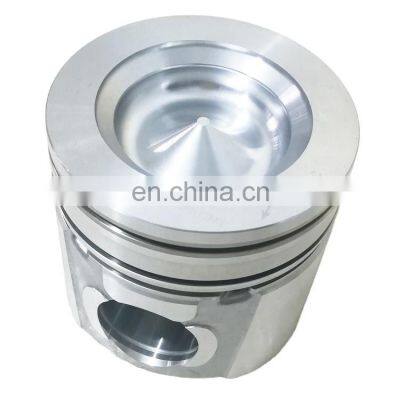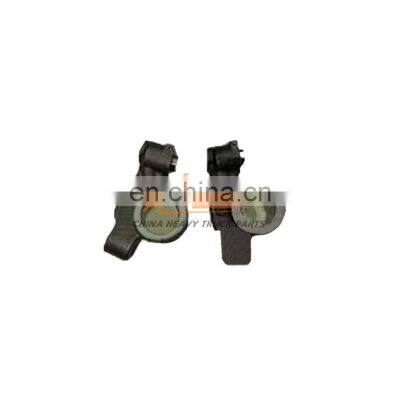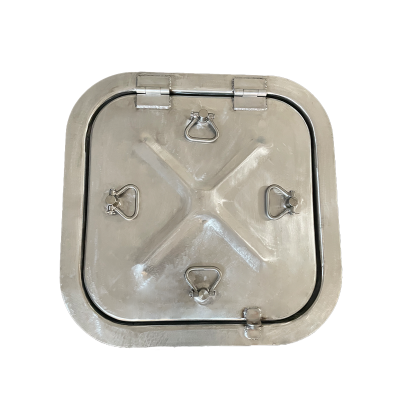Piston Part Insights & Buyer's Guide
Pistons are vital parts for internal combustion engines and bear the important function of transferring the chemical energy of fuel into mechanical energy. At the center of each engine, up and down movement of piston occurs in the cylinder while the piston is carrying out the compression and combustion stages that drive the engine. The piston head is an active participant in the combustion process; while pushing towards the expanding gases, high pressure and temperature are generated on it. This particular movement is also involved in the working of gasoline and diesel engines, so proper functioning of the engines cannot happen without pistons.
Each piston has several attachments such as the piston ring, the piston skirt, and the piston pin. The piston ring ensures that the cylinder is sealed gas-tight so that combustion gases cannot escape and maximum pressure can be maintained during the compression stroke. It also facilitates lubrication of the walls of the cylinder to resist friction and wear. The skirt of the piston keeps the piston stable in movement, resisting inadvertent contact with the cylinder wall, which could cause piston slap-an unwanted noise. The connecting rod connects the piston to the crankshaft, transmitting the force arising from the combustion process to the engine's rotating assembly to drive the machine.
The piston assembly is a very intricate apparatus with various critical components, each performing a specific job to guarantee the smooth running of the engine. The wrist pin, also called a gudgeon pin, attaches the piston to the connecting rod, thereby permitting its pivotal movement essential during the engine's cycle. The piston bearings further maintain this connection while preventing wear, thus prolonging the life of the engine components. Furthermore, piston cooling is of great importance since overheating can lead to failure. Consequently, sufficient circulation of engine oil is necessary to avert excessive heat and friction between the moving parts of the piston and the cylinder.
Understanding Piston Components
The Role of Piston Rings
Piston rings are the main components of any engine piston, which play huge roles in allowing internal combustion engines to function so efficiently. The rings are mounted around the piston and serve many purposes. They mainly provide a gas-tight seal between the piston and the cylinder wall and maintain the pressure on top during the compression and combustion periods. The combustion gases leak into the crankcase, and this leakage would compromise the engine's power and efficiency. It also controls the consumption of engine oil by scraping excess oil on the cylinder walls back to the crankcase, thus preventing it from going into the combustion chamber, while the piston rings lubricate the cylinder walls and reduce friction and wear, thereby prolonging the life of the piston components and facilitating smoother operation of the engine. Proper piston ring operation partially prevents piston slap, which, if left unchecked, seriously damages the engine.
Key Elements of Piston Assembly
The piston assembly is complex, with several main components all designed to work together to enhance engine functionality and efficiency. At the center of this assembly is the piston itself, designed to withstand greatly damaging pressures and temperatures of the combustion chamber. The piston crown, or head, is meant to take the direct hit of the expanding gases upon combustion. Alongside the piston runs the piston pin, otherwise known as the gudgeon pin or wrist pin, which joins the piston with the connecting rod; this rod, in turn, serves as a mechanical link between the piston and the crankshaft and transmits the force generated by the combustion procedure into the rotating assembly of the engine. Piston bearings support this link while reducing such wear and tear to the moving parts. Piston skirts control the lateral motion of the piston in the cylinder to avoid unwanted lateral motion or contact with the cylinder wall. Through this all-encompassing arrangement, piston components marry together to usher the main cycle, providing great performance with an extended life for these cars.
How Piston Moves within the Engine
The piston moving inside the engine is an extremely basic element for internal combustion engine operation. The piston goes up and down inside the engine cylinder, powered directly by the combustion force. The details of piston strokes inside an engine are as follows:
Intake Stroke: The piston goes down; a vacuum is created for air and fuel to be drawn in.
Compression Stroke: As the piston goes up, the mixture is compressed into the combustion chamber.
Power Stroke: The spark plug ignites the compressed gas, which causes a rapid expansion of gases, forcing the piston downwards.
Exhaust Stroke: As the piston is moving up again, it throws out burnt gases out of the cylinder.
This continual cyclical movement is what powers the engine. Having an insight into how exactly a piston moves within the engine will bring into perspective how carefully and wonderfully balanced the forces are with their parts to maintain an efficiently working engine.
Types of Pistons and Uses
Different Kinds of Engine Pistons
There are flat-tops, domed pistons, with the force of gravity upon them, dished, deflector, and slip pistons.
Flat-top Pistons: Balanced compression.
Domed Pistons: Increase compression ratio.
Dished Pistons: Lower compression for turbo engines.
Deflector Pistons: Redirect fuel-air mixture flow.
Slipper Pistons: Reduce weight for higher RPM.
Specialized Pistons for High-Performance Engines
High-performance pistons are custom-made to withstand the extreme conditions under which performance engines operate, where more power and durability represent a competitive advantage. Such pistons benefit from the use of exotic materials and design features that contribute both to increased efficiency of the engine and the life span of the engine. For example, performance pistons are forged rather than cast to present greater strength in resisting high temperatures and pressures endured in the combustion chamber. Advanced alloys, usually aluminum or titanium, are used to minimize piston weight and, consequently, lower inertia, thereby allowing higher engine speeds. High-performance pistons may have special coatings that help in heat dissipation and cut down friction between the piston and cylinder wall. Therefore, they improve thermal efficiency, thus enhancing power generation and fuel efficiency. Moreover, these pistons are often designed within tighter tolerances and include reinforced piston skirt and crown features to withstand the high stresses during intense driving conditions. Such specialized pistons are very important to unleash maximum power from performance engines while ensuring reliability and durability.
Application in Hybrid and Electric Vehicles
Though the hybrid and electric vehicles depend mostly on electric motors, pistons still hold great importance in the operation of the hybrid engines where internal combustion is combined with electric propulsion. In hybrid vehicle engines, pistons contribute to the efficiency of the internal combustion engine combined with the electric motor in optimizing fuel consumption and emission reduction. The pistons of these engines are generally designed for fuel efficiency, using lightweight materials and optimized geometries to reduce energy loss during combustion and hence increase overall engine efficiency. Also, improvements to piston technology are being considered for greater integration of internal combustion engines with hybrid configuration settings, such as innovative experimental coatings and materials to minimize friction and wear and maximize engine life. Of course, pure electric vehicles do not carry traditional pistons. In contrast, it is these piston engine technologies and materials that further change and drive the design and manufacture of components in electric drivetrains, enabling piston technology to be forever changing and adapting in the automotive industry.
Maintenance Tips to Extend the Piston Life
Regular Inspection and Maintenance Practices
Regular inspection and maintenance of piston components extend the life and performance of an engine piston. Routine inspection serves in locating instances of wear on the piston ring, cracks on the piston skirt, or incidents of piston slap, all of which contribute to inferior performance of the engine. It is imperative to check the piston and the cylinder for any abnormal wear patterns or scoring that may arise due to improper lubrication or entry of foreign particles in the combustion chamber. Inspection of the piston pin and wrist pin for possible signs of fatigue or damage is equally important as these parts allow the piston motion within the cylinder. Periodic measurements of the gap between the piston and cylinder wall to ensure a gas-tight seal must be maintained, thus preserving the compression and stopping the leaking of combustion gases into the crankcase. Bent piston bearings and damaged connecting rods further prevent smooth movement of engine parts, thereby giving rise to piston slapping as well as other mechanical defects. Well-established maintenance practices prolong the life of piston parts, as well as improving the efficiency and dependability of the internal combustion engine.
Selecting the Proper Oil for Engine Performance
A proper engine oil selection is crucial for the good performance and longevity of engine pistons. Engine oil performs several functions, such as the lubrication of piston assembly moving parts, heat dissipation, and corrosion protection within the engine. Suitable oils work to keep piston and cylinder with a minimum friction; thus, reducing the wearing out of piston rings and cylinder walls. In engine oil selection, one should consider engine type, operating conditions, and manufacturer's specifications. A good oil with appropriate viscosity will form a very stable lubricating film that will facilitate the effective movement of the piston within the cylinder. The synthetic oil is mostly recommended for its outstanding capability to maintain good lubrication properties even at high temperatures. This is beneficial, especially in high-performance engines or where turbocharging-related piston cooling is highly essential. Generally, the timely change of the engine oil and oil filter carried out as per the vehicle's maintenance schedule will keep the oil clean, thereby avoiding contamination build-up that could affect the piston components. Using the right oil and maintaining its quantity are the best ways of enhancing the internal combustion engine's performance and extending piston parts' lifespan.
Engine Cooling Best Practice
Good engine cooling keeps overheating at bay and, in turn, contributes to piston part longevity. The great heat, which stems from the combustion process via thermal expansion, destroys the piston head and damages other engine components. In view of maintaining a low temperature for the engine, keep checking and servicing the cooling system occasionally, including the coolant level, the radiator, and all the hose connections. This cooling system will take heat out of the pistons well, consequently reducing any thermal strain imposed on the piston and cylinder. Further, cooling of piston moving parts is given by a film layer of lubrication through engine oil circulation. Another thing to check and maintain is the engine thermostat, whose integrity directs the flow of coolant to keep the engine at an optimum operating temperature. With regard to performance engines, a specialized cooling system or a cooling enhancement to the piston design in terms of heat dissipation may be considered, such as slipper pistons. Practicing appropriate engine cooling techniques would prevent any overheating conditions and, thus, protect the pistons to boost overall performance and reliability of the internal combustion engine.
Frequently Asked Questions (FAQs)
What are the main parts of a piston?
The main parts of a piston include the piston head, piston skirt, piston rings, and the piston pin. The piston head is the top surface of the piston that interacts with the combustion gases. Below this, the piston skirt helps maintain alignment inside the cylinder, and it also supports the piston rings, which are crucial for maintaining gas-tightness. The piston pin connects the piston to the connecting rod, linking it to the crankshaft. Understanding these piston parts and components is essential for anyone working on a car’s engine.
How does a piston move within an engine?
The movement of the piston inside the cylinder is vital for the engine's operation. As fuel ignites in the combustion chamber, it creates pressure on the piston. This pressure forces the piston down, causing it to compress the air-fuel mixture during the intake stroke. The piston will compress the gases during the compression stroke before the ignition occurs. The piston moves back up to expel exhaust gases, completing the cycle. This piston movement is critical in ensuring the engine runs smoothly and efficiently.
What is the function of piston rings?
Piston rings serve several essential functions in an engine. They are known as the piston components that create a seal between the piston and the cylinder wall, making the combustion chamber gas-tight. This sealing prevents combustion gases from leaking past the piston and also helps retain oil to lubricate the parts of a piston. Typically, there are compression rings that maintain compression and oil control rings that manage oil consumption. Proper functioning of these rings is crucial for optimal engine performance, and any wear can lead to a drop in engine oil level.
What materials are piston parts made of?
Piston parts are often made from materials that can withstand high temperatures and pressures, such as aluminum alloys and cast iron. Aluminum is lightweight and offers good thermal conductivity, which is why it’s commonly used for the piston assembly in many modern engines. Cast iron pistons are more durable and can handle greater stress, making them suitable for heavy-duty applications. The choice of material affects the performance and longevity of piston engines, and engineers must choose the right material based on the engine's design and intended use.
How does the piston connect to the crankshaft?
The piston connects to the crankshaft via a connecting rod, which plays a significant role in converting the piston's linear motion into rotational motion. The end of the connecting rod attaches to the crankshaft, allowing the up-and-down motion of the piston to turn the crankshaft, which ultimately powers the vehicle. This connection is critical for the engine's operation, as it ensures that the energy from combustion is effectively transformed into mechanical energy. A well-functioning connection between the piston and crankshaft is essential for maintaining engine performance.
What is a typical piston used in modern engines?
A typical piston used in modern engines is designed to maximize efficiency and durability. These pistons often feature a dome-shaped top surface to optimize combustion and improve airflow in the combustion chamber. Moreover, they are usually equipped with multiple piston rings to enhance sealing and minimize oil consumption. The design of a piston also considers the engine's specific requirements, such as its displacement and intended load. Understanding the features of typical pistons can help in selecting the right piston for an engine rebuild or replacement.
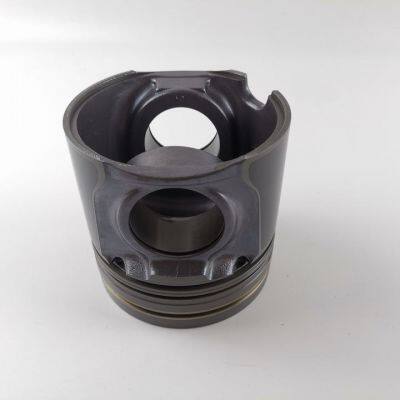 Truck Heavy Equipment ISL 8.9 QSL8.9 6L Engine Parts Piston 5267632US$ 32.00 - 38.00MOQ: 1 PieceHunan shanbuzhuanshuizhuan Power Technology co.,Ltd1 YR
Truck Heavy Equipment ISL 8.9 QSL8.9 6L Engine Parts Piston 5267632US$ 32.00 - 38.00MOQ: 1 PieceHunan shanbuzhuanshuizhuan Power Technology co.,Ltd1 YR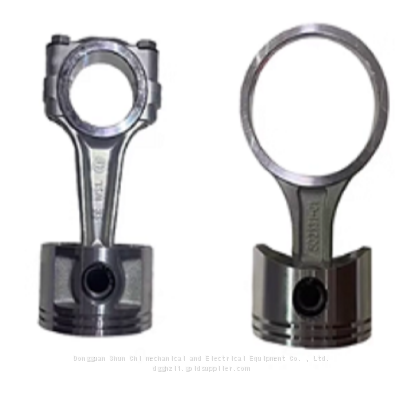 3hp 5hp7.5hp 15hp 20hp refrigeration piston compressor parts connecting rod pistonUS$ 480 - 2500MOQ: 1 PieceMaterial: NonmetallicCertification: ISOWarranty: 344Application: CoolerDongguan Shun Chi mechanical and Electrical Equipment Co. , Ltd.3 YRS
3hp 5hp7.5hp 15hp 20hp refrigeration piston compressor parts connecting rod pistonUS$ 480 - 2500MOQ: 1 PieceMaterial: NonmetallicCertification: ISOWarranty: 344Application: CoolerDongguan Shun Chi mechanical and Electrical Equipment Co. , Ltd.3 YRS Perkins T433072 - PISTON ASSEMBLY Genuine Engine Spare partsNegotiableMOQ: 1 PieceBrand Name: PISTON ASSEMBLYModel Number: T433072Ningbo Qiuning Trading Co., Ltd3 YRS
Perkins T433072 - PISTON ASSEMBLY Genuine Engine Spare partsNegotiableMOQ: 1 PieceBrand Name: PISTON ASSEMBLYModel Number: T433072Ningbo Qiuning Trading Co., Ltd3 YRS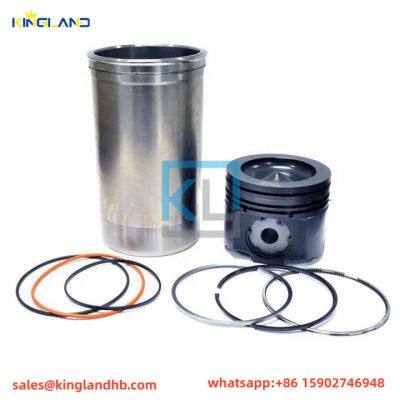 6081 engine parts Piston fit for John DeereUS$ 30 - 50MOQ: 30 PiecesType: PistonsWarranty: 6個月Application: ExcavatorCondition: NewHubei Kingland Industrial Co., Ltd.1 YR
6081 engine parts Piston fit for John DeereUS$ 30 - 50MOQ: 30 PiecesType: PistonsWarranty: 6個月Application: ExcavatorCondition: NewHubei Kingland Industrial Co., Ltd.1 YR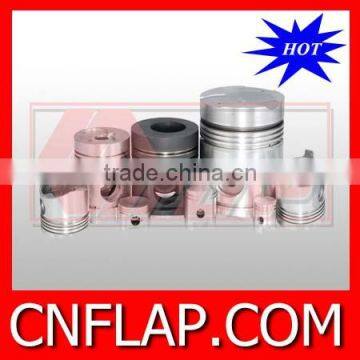 engine piston parts for kamazUS$ 5 - 25MOQ: 1000 PiecesType: PistonSize: 120mmCar Make: KamazOE NO.: KAM3-740Guangzhou Cnflap Auto Parts Ltd.5 YRS
engine piston parts for kamazUS$ 5 - 25MOQ: 1000 PiecesType: PistonSize: 120mmCar Make: KamazOE NO.: KAM3-740Guangzhou Cnflap Auto Parts Ltd.5 YRS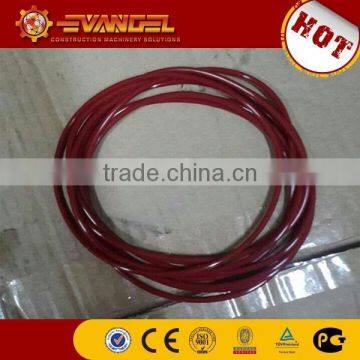 Forklift piston parts for YTO CPCD50US$ 1 - 100MOQ: 1 SetPlace of Origin: Henan, ChinaBrand Name: YTOModel Number: CPCD50Shanghai Evangel Industrial Co., Ltd.5 YRS
Forklift piston parts for YTO CPCD50US$ 1 - 100MOQ: 1 SetPlace of Origin: Henan, ChinaBrand Name: YTOModel Number: CPCD50Shanghai Evangel Industrial Co., Ltd.5 YRS Shock Absorber piston parts D35XD8X14US$ 0.30 - 0.50MOQ: 1 PieceBrand Name: XIA YIPlace of Origin: ChinaModel Number: D35XD8X14Ningbo Xia Yi Auto Parts Co.,Ltd5 YRS
Shock Absorber piston parts D35XD8X14US$ 0.30 - 0.50MOQ: 1 PieceBrand Name: XIA YIPlace of Origin: ChinaModel Number: D35XD8X14Ningbo Xia Yi Auto Parts Co.,Ltd5 YRS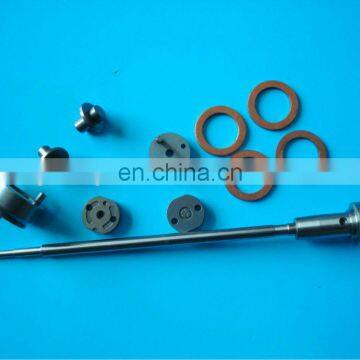 Control piston part for Common Rail InjectorUS$ 10 - 20MOQ: 20 PiecesBrand Name: YTPlace of Origin: Shandong, ChinaModel Number: Control Piston PartType: PistonLiaocheng Yitong Diesel Parts Co., Ltd.5 YRS
Control piston part for Common Rail InjectorUS$ 10 - 20MOQ: 20 PiecesBrand Name: YTPlace of Origin: Shandong, ChinaModel Number: Control Piston PartType: PistonLiaocheng Yitong Diesel Parts Co., Ltd.5 YRS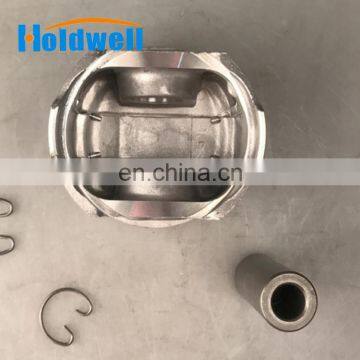 Factory Price Tractor piston parts Engine Cylinder Liner KitUS$ 15 - 50MOQ: 10 PiecesBrand Name: holdwell, holdwellPlace of Origin: Zhejiang, ChinaModel Number: 1G790-21112, 1G790-21112Hangzhou Holdwell Mechanical And Electrical Co., Ltd.5 YRS
Factory Price Tractor piston parts Engine Cylinder Liner KitUS$ 15 - 50MOQ: 10 PiecesBrand Name: holdwell, holdwellPlace of Origin: Zhejiang, ChinaModel Number: 1G790-21112, 1G790-21112Hangzhou Holdwell Mechanical And Electrical Co., Ltd.5 YRS Forging and cnc machining piston parts custom machining service OEMUS$ 0.01 - 6.25MOQ: 150 PiecesCNC Machining or Not: CNC MachiningType: Broaching, Drilling, Laser Machining, Milling, TurningMaterial Capabilities: Aluminum, Brass, Bronze, Copper, Hardened Metals, Precious Metals, Stainless Steel, Steel AlloysMicro Machining or Not: Micro MachiningShenzhen Yaopeng Metal Products Co., Ltd.5 YRS
Forging and cnc machining piston parts custom machining service OEMUS$ 0.01 - 6.25MOQ: 150 PiecesCNC Machining or Not: CNC MachiningType: Broaching, Drilling, Laser Machining, Milling, TurningMaterial Capabilities: Aluminum, Brass, Bronze, Copper, Hardened Metals, Precious Metals, Stainless Steel, Steel AlloysMicro Machining or Not: Micro MachiningShenzhen Yaopeng Metal Products Co., Ltd.5 YRS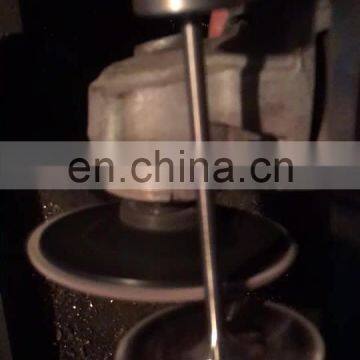 racing jet ski piston parts 1503 1630 brp Oil Filter for CanAm SeaDoo Snowmobile 420956741 snowmobile engine parts xbt wsm usaUS$ 0.26 - 5MOQ: 200 PiecesBrand Name: Gao ShengPlace of Origin: Hebei, ChinaWarranty: 1 YearsShijiazhuang Gaosheng Auto Parts Make Co., Ltd.5 YRS
racing jet ski piston parts 1503 1630 brp Oil Filter for CanAm SeaDoo Snowmobile 420956741 snowmobile engine parts xbt wsm usaUS$ 0.26 - 5MOQ: 200 PiecesBrand Name: Gao ShengPlace of Origin: Hebei, ChinaWarranty: 1 YearsShijiazhuang Gaosheng Auto Parts Make Co., Ltd.5 YRS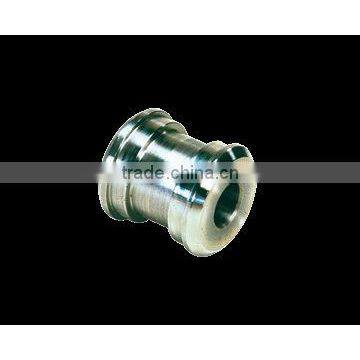 Hydraulic Parts-Piston,small pistonsUS$ 1 - 5MOQ: 1 PieceType: Other, hydraulic motorModel Number: HS-2991Brand Name: HISEAPlace of Origin: Zhejiang, ChinaNingbo Yinzhou Hisea Machinery Co., Ltd.5 YRS
Hydraulic Parts-Piston,small pistonsUS$ 1 - 5MOQ: 1 PieceType: Other, hydraulic motorModel Number: HS-2991Brand Name: HISEAPlace of Origin: Zhejiang, ChinaNingbo Yinzhou Hisea Machinery Co., Ltd.5 YRS PISTON PIN FORKLIFT PARTSNegotiableMOQ: 1 PiecePlace of Origin: Zhejiang, ChinaBrand Name: XCModel Number: JAC/HANGCHA/HELIHangzhou Maoding Auto Parts Co., Ltd.5 YRS
PISTON PIN FORKLIFT PARTSNegotiableMOQ: 1 PiecePlace of Origin: Zhejiang, ChinaBrand Name: XCModel Number: JAC/HANGCHA/HELIHangzhou Maoding Auto Parts Co., Ltd.5 YRS C100 Piston Motorcycle partsUS$ 0.5 - 2MOQ: 200 PiecesType: Other, C100 PistonPlace of Origin: Hebei, ChinaBrand Name: VuvuzelaHebei Longcheng Motor Vehicle Parts Co., Ltd.5 YRS
C100 Piston Motorcycle partsUS$ 0.5 - 2MOQ: 200 PiecesType: Other, C100 PistonPlace of Origin: Hebei, ChinaBrand Name: VuvuzelaHebei Longcheng Motor Vehicle Parts Co., Ltd.5 YRS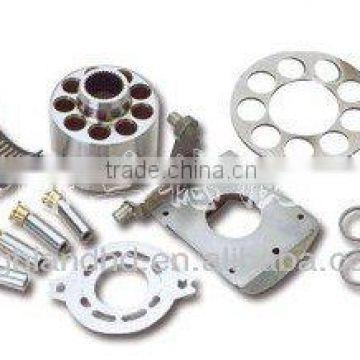 Piston pump spare partsUS$ 20 - 2,850MOQ: 1 SetPlace of Origin: Shandong, ChinaBrand Name: HighLandModel Number: HPV 90Theory: Rotary PumpJi'nan High Land Hydraulic Pump Co., Ltd.5 YRS
Piston pump spare partsUS$ 20 - 2,850MOQ: 1 SetPlace of Origin: Shandong, ChinaBrand Name: HighLandModel Number: HPV 90Theory: Rotary PumpJi'nan High Land Hydraulic Pump Co., Ltd.5 YRS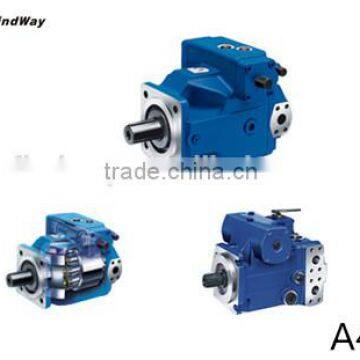 Hydraulic piston pump partsUS$ 1 - 600MOQ: 1 PieceType: Hydraulic Power UnitsModel Number: A4VSOBrand Name: FindwayPlace of Origin: Zhejiang, ChinaNingbo Jiangdong Findway Import & Export Co., Ltd.5 YRS
Hydraulic piston pump partsUS$ 1 - 600MOQ: 1 PieceType: Hydraulic Power UnitsModel Number: A4VSOBrand Name: FindwayPlace of Origin: Zhejiang, ChinaNingbo Jiangdong Findway Import & Export Co., Ltd.5 YRS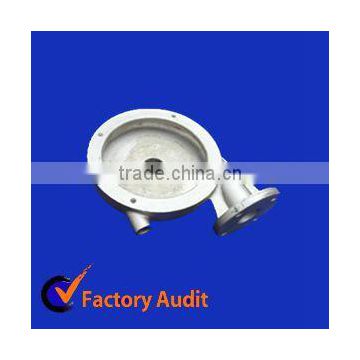 casting piston pump and piston pump partsUS$ 0.5 - 13MOQ: 100 PiecesPlace of Origin: Shandong, ChinaBrand Name: tllModel Number: tll-0807Theory: Centrifugal PumpQingdao Tianluli Industrial Co., Ltd.5 YRS
casting piston pump and piston pump partsUS$ 0.5 - 13MOQ: 100 PiecesPlace of Origin: Shandong, ChinaBrand Name: tllModel Number: tll-0807Theory: Centrifugal PumpQingdao Tianluli Industrial Co., Ltd.5 YRS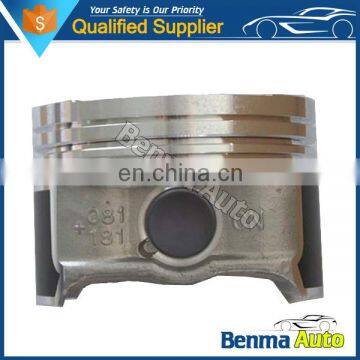 auto engine parts piston 92067904US$ 1 - 20MOQ: 50 SetsBrand Name: HF BMPlace of Origin: Anhui, ChinaModel Number: OEMHuangshan Benma Group Co., Ltd.5 YRS
auto engine parts piston 92067904US$ 1 - 20MOQ: 50 SetsBrand Name: HF BMPlace of Origin: Anhui, ChinaModel Number: OEMHuangshan Benma Group Co., Ltd.5 YRS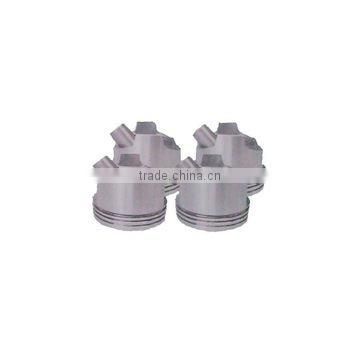 Wuling Part Wuling Engine PistonUS$ 1 - 10,000MOQ: 1 PiecePlace of Origin: Guangxi, ChinaBrand Name: WulingModel Number: pistonLiuzhou Quanlin Construction Machinery Co., Ltd.5 YRS
Wuling Part Wuling Engine PistonUS$ 1 - 10,000MOQ: 1 PiecePlace of Origin: Guangxi, ChinaBrand Name: WulingModel Number: pistonLiuzhou Quanlin Construction Machinery Co., Ltd.5 YRS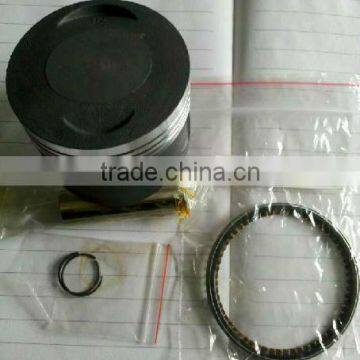 Tricycle Part: PISTON KIT CG150US$ 2 - 10MOQ: 100 SetsUse For: CargoDriving Type: MotorizedDisplacement: 111 - 150ccBody Type: OpenCyclePro Industry Limited5 YRS
Tricycle Part: PISTON KIT CG150US$ 2 - 10MOQ: 100 SetsUse For: CargoDriving Type: MotorizedDisplacement: 111 - 150ccBody Type: OpenCyclePro Industry Limited5 YRS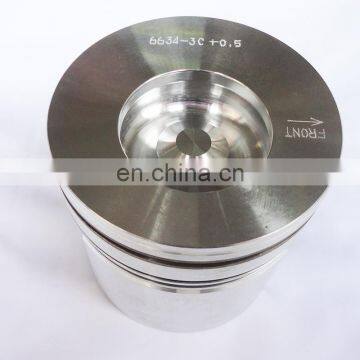 engine parts piston engine assembly 6BT 3926634 pistonUS$ 17 - 19MOQ: 1 PieceBrand Name: DCECPlace of Origin: Hubei, ChinaWarranty: 6months, 6monthsdsengineparts5 YRS
engine parts piston engine assembly 6BT 3926634 pistonUS$ 17 - 19MOQ: 1 PieceBrand Name: DCECPlace of Origin: Hubei, ChinaWarranty: 6months, 6monthsdsengineparts5 YRS Original Machinery Engines Part 4JB1 Pistons and Piston RingUS$ 10 - 30MOQ: 1 PieceBrand Name: ALLPlace of Origin: JapanGuangzhou Bain Machinery Equipment Co., Ltd.5 YRS
Original Machinery Engines Part 4JB1 Pistons and Piston RingUS$ 10 - 30MOQ: 1 PieceBrand Name: ALLPlace of Origin: JapanGuangzhou Bain Machinery Equipment Co., Ltd.5 YRS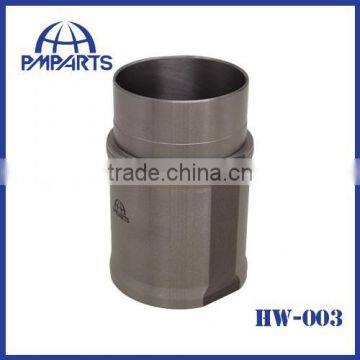 original auto parts piston,engine sleeves,engine piston sleeves supplyUS$ 6.5 - 23.7MOQ: 100 PiecesPlace of Origin: Hebei, ChinaBrand Name: PMPARTSModel Number: HW-003Engine Type: DieselXingtai Haoheng Trading Co., Ltd.5 YRS
original auto parts piston,engine sleeves,engine piston sleeves supplyUS$ 6.5 - 23.7MOQ: 100 PiecesPlace of Origin: Hebei, ChinaBrand Name: PMPARTSModel Number: HW-003Engine Type: DieselXingtai Haoheng Trading Co., Ltd.5 YRS AE Procurement Lead requested a quote for High quality Piston Ring Japan OEM 13011-54130 For car spare parts2025-09-28 16:02:38
AE Procurement Lead requested a quote for High quality Piston Ring Japan OEM 13011-54130 For car spare parts2025-09-28 16:02:38 MA Business Owner placed an order for Good Quality Japan Auto Parts Piston Ring 13011-75020 For Hilux2025-09-24 20:07:15
MA Business Owner placed an order for Good Quality Japan Auto Parts Piston Ring 13011-75020 For Hilux2025-09-24 20:07:15 ZM Procurement Lead placed an order for piston (parts)NT855 30173482025-09-25 01:11:17
ZM Procurement Lead placed an order for piston (parts)NT855 30173482025-09-25 01:11:17 YT Lead Purchaser inquired about piston parts2025-09-24 14:59:42
YT Lead Purchaser inquired about piston parts2025-09-24 14:59:42 VU Importer is sourcing KOMATSU piston DK487099-92202025-09-26 20:20:32
VU Importer is sourcing KOMATSU piston DK487099-92202025-09-26 20:20:32 TO Procurement Specialist is sourcing Sell Piston Part2025-09-26 05:34:11
TO Procurement Specialist is sourcing Sell Piston Part2025-09-26 05:34:11 BJ Importer submitted an RFQ for Bitzer Piston and Connectiong Rod Assy compressor Parts 302298-14 100% Original22 hours ago
BJ Importer submitted an RFQ for Bitzer Piston and Connectiong Rod Assy compressor Parts 302298-14 100% Original22 hours ago LA Business Owner submitted an RFQ for Piston Set,Piston parts,Piston2025-09-26 09:05:15
LA Business Owner submitted an RFQ for Piston Set,Piston parts,Piston2025-09-26 09:05:15 BF Operations Head placed an order for Diesel Engine Piston Parts 2881748 Piston kit9 hours ago
BF Operations Head placed an order for Diesel Engine Piston Parts 2881748 Piston kit9 hours ago GY Sourcing Manager is sourcing China Suplliper Engine Car Parts OEM WLYE-11-SAO Piston Set For Ranger2025-09-28 04:13:26
GY Sourcing Manager is sourcing China Suplliper Engine Car Parts OEM WLYE-11-SAO Piston Set For Ranger2025-09-28 04:13:26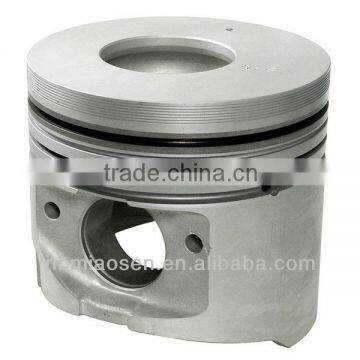 precision casting auto power parts car pistonsUS$ 0.4 - 50MOQ: 500 PiecesType: Other, Piston, precision casting auto power parts car pistonsSize: as per clients' drawingCar Make: as per clients' drawingOE NO.: 13101-10033,13101-11050,13101-11160Ningbo Yinzhou Miaosen Machinery Co., Ltd.5 YRS
precision casting auto power parts car pistonsUS$ 0.4 - 50MOQ: 500 PiecesType: Other, Piston, precision casting auto power parts car pistonsSize: as per clients' drawingCar Make: as per clients' drawingOE NO.: 13101-10033,13101-11050,13101-11160Ningbo Yinzhou Miaosen Machinery Co., Ltd.5 YRS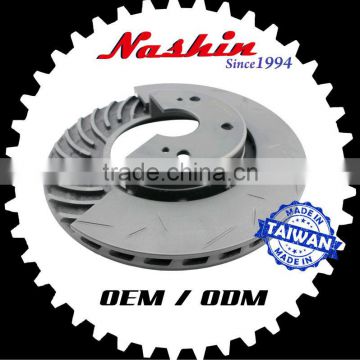 auto spare parts, brake lining, forged pistonUS$ 15 - 2,000MOQ: 10 SetsType: Brake DiscsMaterial: Excellent QualityCertification: ISO9001:2008Size: DependsWINDFLOWERS TECHNOLOGY CO., LTD.5 YRS
auto spare parts, brake lining, forged pistonUS$ 15 - 2,000MOQ: 10 SetsType: Brake DiscsMaterial: Excellent QualityCertification: ISO9001:2008Size: DependsWINDFLOWERS TECHNOLOGY CO., LTD.5 YRS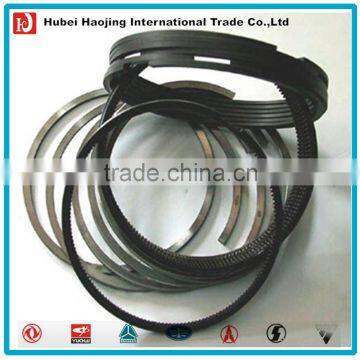 Spare part engine piston ring 4955169US$ 10 - 100MOQ: 1 PieceType: Other, Piston ring, piston ringSize: Standard SizeCar Make: DonfengOE NO.: 4955169Hubei Haojing International Trade Co., Ltd.5 YRS
Spare part engine piston ring 4955169US$ 10 - 100MOQ: 1 PieceType: Other, Piston ring, piston ringSize: Standard SizeCar Make: DonfengOE NO.: 4955169Hubei Haojing International Trade Co., Ltd.5 YRS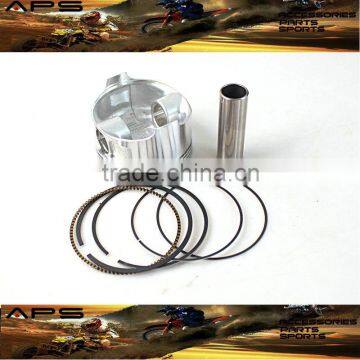 Engine parts Piston Kit for CFMOTO CF500NegotiableMOQ: 50 SetsType: PistonPlace of Origin: Zhejiang, ChinaBrand Name: SUNWAYModel Number: SW-CF500-15Jinhua Sunway Import & Export Co., Ltd.5 YRS
Engine parts Piston Kit for CFMOTO CF500NegotiableMOQ: 50 SetsType: PistonPlace of Origin: Zhejiang, ChinaBrand Name: SUNWAYModel Number: SW-CF500-15Jinhua Sunway Import & Export Co., Ltd.5 YRS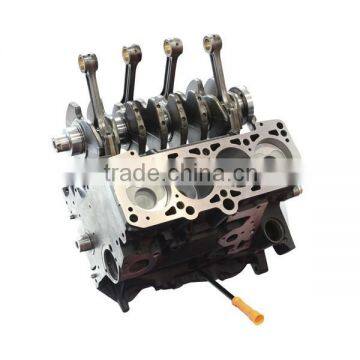 hyundai Matrix / Lavita / ix20 cylinder, Liner, Piston, Connecting Rod, Piston Ring. Piston Pin partsNegotiableMOQ: 1 PiecePlace of Origin: Seoul, South KoreaBrand Name: HYUNDAI, KIA, CHEVROLET, SSANGYONG, TATA DAEWOO, SCANIA, VOLVO, BENZModel Number: CAR, BUS, TRUCKAUTO PARTS SOLUTION5 YRS
hyundai Matrix / Lavita / ix20 cylinder, Liner, Piston, Connecting Rod, Piston Ring. Piston Pin partsNegotiableMOQ: 1 PiecePlace of Origin: Seoul, South KoreaBrand Name: HYUNDAI, KIA, CHEVROLET, SSANGYONG, TATA DAEWOO, SCANIA, VOLVO, BENZModel Number: CAR, BUS, TRUCKAUTO PARTS SOLUTION5 YRS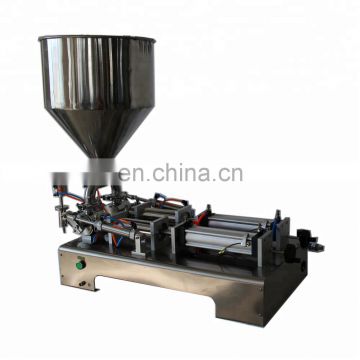 Top Quality 1000-5000ml piston bottle filling machine machining partUS$ 485 - 495MOQ: 1 SetBrand Name: JOYGOALPlace of Origin: Shanghai, ChinaCertification: CE SGSAfter-sales Service Provided: Engineers available to service machinery overseasShanghai Joygoal Food Machinery Co., Ltd.5 YRS
Top Quality 1000-5000ml piston bottle filling machine machining partUS$ 485 - 495MOQ: 1 SetBrand Name: JOYGOALPlace of Origin: Shanghai, ChinaCertification: CE SGSAfter-sales Service Provided: Engineers available to service machinery overseasShanghai Joygoal Food Machinery Co., Ltd.5 YRS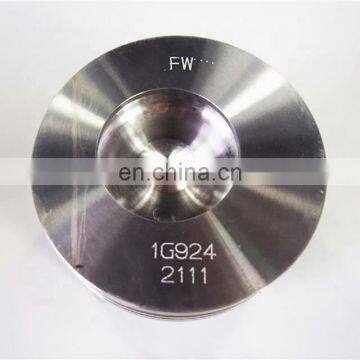 1G924-2111 Piston Kubota 68G Combine Harvester Spare PartsUS$ 50 - 50MOQ: 10 PiecesBrand Name: OEMPlace of Origin: Jiangsu, ChinaUse: HarvestersWuhan Wubota Machinery Co., Ltd.5 YRS
1G924-2111 Piston Kubota 68G Combine Harvester Spare PartsUS$ 50 - 50MOQ: 10 PiecesBrand Name: OEMPlace of Origin: Jiangsu, ChinaUse: HarvestersWuhan Wubota Machinery Co., Ltd.5 YRS

